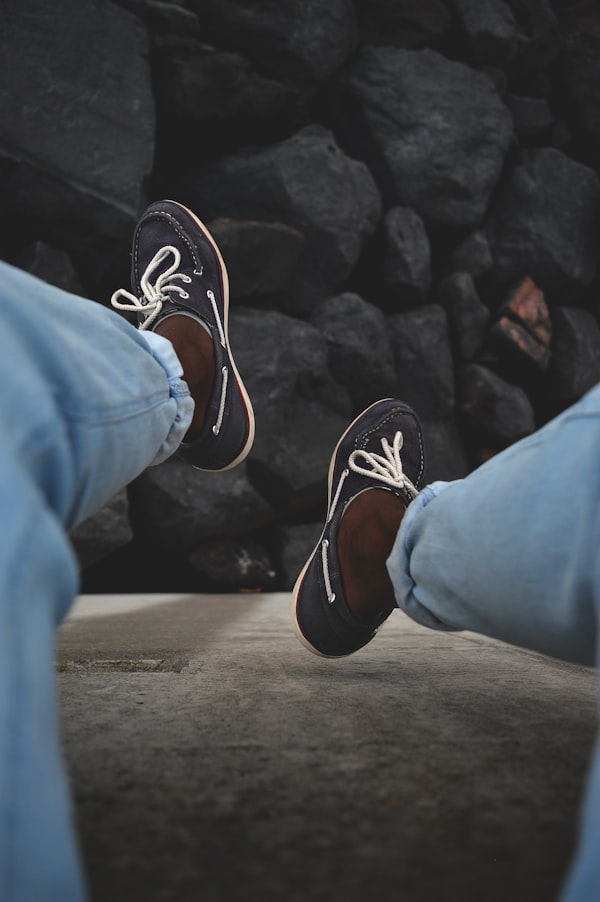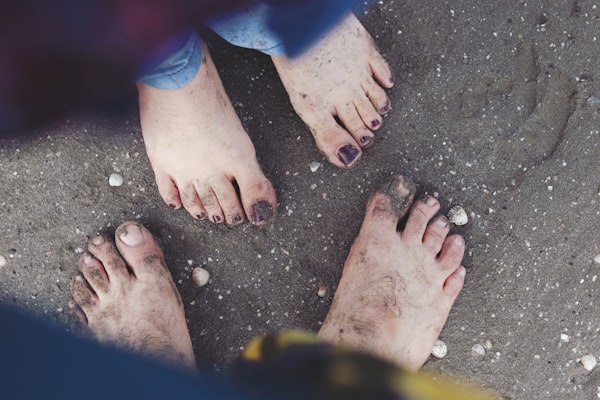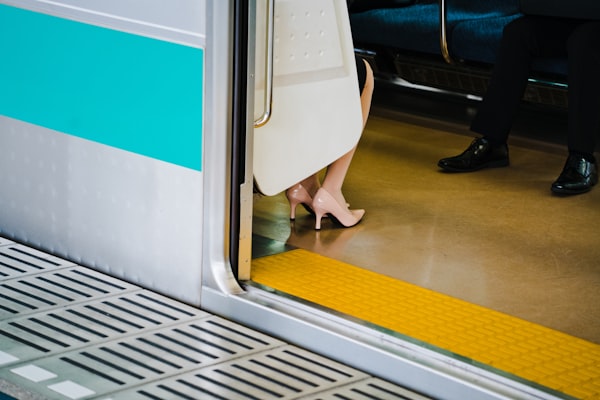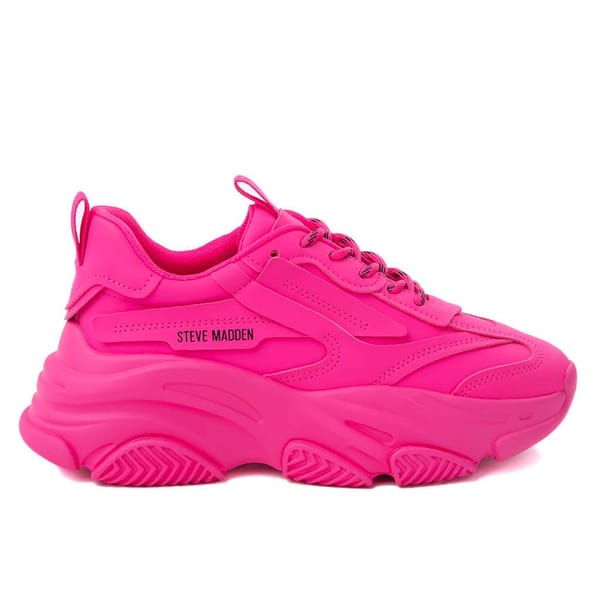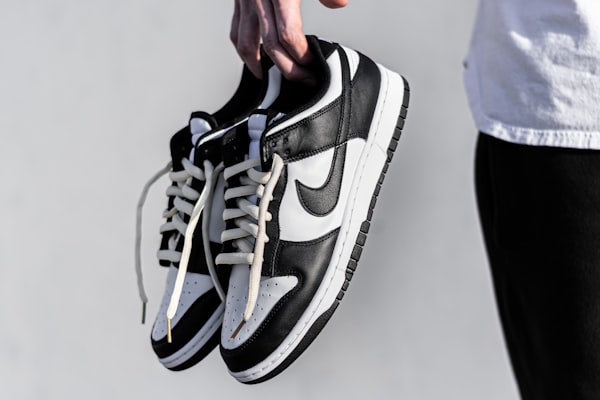Have you ever found yourself in a laundry dilemma, staring at your wet and soggy shoes, wondering, "Can I put shoes in the dryer?" Buckle up because we're about to embark on a footwear adventure.
Picture this: you've just had a fantastic outdoor adventure, your favorite sneakers drenched from unexpected rain. Or perhaps it's a mundane laundry day, and your trusty old sneakers need a refresh. The age-old question lingers in your mind – can your shoes survive the dryer's spin cycle without turning into a laundry room catastrophe?
We know you desire a hassle-free solution to those soggy shoes. Whether it's your favorite running sneakers, beloved hiking boots, or those stylish kicks that need a quick revival, the thought of effortlessly drying them in the dryer is tempting. Imagine the convenience of not having to wait for days for them to air dry.
In this edition of "Dryer Diaries," we're about to uncover the truth behind this laundry room conundrum. We'll explore the do's and don'ts, share some tips and tricks, and help you decide whether putting your shoes in the dryer is a bold step towards convenience or a recipe for disaster. So, slip on your comfiest shoes and join us as we venture into the world of shoe drying inside your trusty dryer – a journey filled with surprises and insights.
Exploring the Shoe-Dryer Conundrum
Looking for quick solutions is natural when faced with wet or soaked shoes. Drying shoes in the dryer is a practice that piques curiosity and raises questions. On the one hand, it promises convenience and a speedy solution to soggy footwear, but on the other, it carries risks and challenges that can't be overlooked.
The idea of placing your shoes alongside your laundry might seem like a time-saving dream. It's a shortcut to dry, comfortable shoes, and who wouldn't want that?
However, challenges loom large. From the incessant thumping noise, as the dryer spins with shoes inside to the potential damage to the dryer's interior or even the shoes themselves, there are numerous pitfalls. The heat in the dryer can also warp shoe materials, causing them to lose shape or degrade prematurely.
Furthermore, there's always the risk of disturbing your fellow household members with the clatter of shoes in the dryer, not to mention the possibility of lint from the shoes affecting other items in the load.
The Pros and Cons
While using the dryer to dry your shoes may seem like a convenient solution, weighing the potential benefits against the drawbacks is essential.
Pros:
- Speedy Drying: The most significant advantage of using the dryer is the speed at which it dries your shoes. Your shoes can go from sopping wet to comfortably dry in a few minutes or hours, depending on the setting.
- Odor Elimination: The heat in the dryer can help eliminate unpleasant odors that may have accumulated in your shoes, especially if they're athletic or regularly worn without socks.
- Convenience: Convenience is a significant selling point. It saves you time and effort, especially when you're in a hurry or don't have a sunny spot for air drying.
Cons:
- Damage to Shoes: The heat and mechanical action of the dryer can damage your shoes, especially if they have delicate materials or glued parts. This may result in warped soles, cracked leather, or misshapen shoes.
- Damage to Dryer: Tossing shoes into the dryer can also be rough on your appliance. The constant thumping of shoes can lead to unbalanced loads, damaging the dryer drum or causing excessive noise.
- Lint and Debris: Shoes can shed lint, dirt, or debris in the dryer, which may not only affect the performance of your dryer but also transfer to other clothing items, leaving them dirty or damaged.
- Safety Hazards: Sometimes, using the dryer for shoes can pose safety hazards. For instance, if the shoes are not properly secured or contain metal elements, they can damage the dryer or pose a fire risk.
So, should you put your shoes in the dryer? The answer isn't a straightforward "yes" or "no." Instead, it's essential to consider the specific circumstances and the type of shoes you're dealing with. While the dryer can quickly fix certain situations, it's not a one-size-fits-all solution.
In the following sections, we'll delve deeper into the do's and don'ts of drying shoes in the dryer, helping you make an informed decision based on your unique shoe-related challenges. By understanding the advantages and risks, you'll be better equipped to decide whether this method is right for your footwear care routine.
The Do's and Don'ts
When done correctly, drying your shoes in the dryer can be convenient. To ensure a safe and effective drying process, follow these essential tips:
- Do Check the Shoe Label: Check the care label before tossing your shoes in the dryer. Some shoes may have manufacturer instructions stating whether they can be machine-dried.
- Do Remove Laces and Insoles: Take out the shoelaces and insoles to ensure even drying and to prevent them from getting tangled or damaged in the dryer.
- Do Secure the Shoes: To avoid the shoes bouncing around inside the dryer, place them inside a mesh laundry bag or pillowcase. This will help reduce noise and protect both the shoes and the dryer.
- Do Use Low Heat and Short Cycles: Opt for low or no-heat settings to minimize the risk of heat-related damage. Also, choose shorter drying cycles to prevent over-drying, which can harm some shoe materials.
- Do Add Towels or Dryer Balls: Placing a couple of clean towels or dryer balls in the dryer alongside your shoes can help absorb moisture and reduce noise. It also provides a cushioning effect, which is gentler on your shoes.
- Do Check Progress Regularly: Periodically check the shoes during the drying process to ensure they are drying evenly and not getting damaged. Stop the dryer immediately if you notice any overheating or damage.
- Do Air Dry Afterwards: Once the shoes have gone through a dryer cycle, it's a good practice to let them air dry for a while to ensure they are completely dry and to prevent any residual heat from causing damage.
While there are effective ways to dry your shoes in the dryer, there are also common mistakes that should be avoided to prevent damage or mishaps:
- Don't Use High Heat: High heat settings can warp shoe materials, causing them to lose shape or even melt in extreme cases. Always opt for low or no-heat settings.
- Don't Overload the Dryer: Overloading the dryer with too many shoes or other items can lead to unbalanced loads, damaging the dryer and potentially your shoes.
- Don't Leave Shoes Unsecured: Tossing shoes into the dryer without securing them in a mesh bag or pillowcase can lead to loud thumping noises and potential damage.
- Don't Ignore Manufacturer Instructions: Failing to check the care label or manufacturer's instructions on your shoes can result in unintended damage and void warranties.
- Don't Skip Air Drying: Avoid wearing freshly dried shoes immediately after the dryer cycle. Allow them to cool and air dry for a while to ensure they're completely moisture-free.
- Don't Use the Dryer for Delicate Shoes: Some delicate or specialty shoes, like those with hand-painted designs or intricate embellishments, are best not subjected to the dryer at all.
Which Types of Shoes Are More Suitable for The Dryer?
Not all types of footwear are created equal when it comes to drying shoes in the dryer. Some shoe types are more suitable for this method, while others should be avoided. Here's a breakdown of which shoes are generally better candidates for the dryer:
- Athletic Shoes: Most athletic shoes, including running shoes and sneakers, are designed to withstand some level of stress. They typically have sturdy soles and durable construction, making them more suitable for dryer drying.
- Canvas Shoes: Canvas shoes, like Converse Chuck Taylors or Vans, are often suitable for dryer drying. They're lightweight and can handle the heat without significant damage.
- Rain Boots: Rain boots made from rubber or waterproof materials usually tolerate dryer drying. However, ensure they are not too close to the heating elements to prevent warping.
- Sandals and Flip-Flops: These open-toed footwear options are generally dryer-friendly, especially if they have no intricate details or embellishments.
Shoe Materials and Features That May Affect the Drying Process
While certain types of shoes are generally dryer-friendly, it's essential to consider the materials and features of your specific footwear. Here are some factors that can affect the drying process and should be taken into account:
- Leather Shoes: Genuine leather shoes can be sensitive to heat, which can cause them to lose their shape or crack. If you must use the dryer for leather shoes, opt for low or no-heat settings.
- Suede and Nubuck: Suede and Nubuck materials are prone to damage when exposed to water or heat. Avoid using the dryer for these shoes, as it can result in irreversible damage, such as discoloration or texture changes.
- Glued Soles: Shoes with glued soles may be at risk of sole separation when exposed to heat. If you have shoes with glued soles, consider alternative drying methods.
- Delicate Embellishments: Shoes with delicate embellishments, like sequins, beads, or embroidery, should not be placed in the dryer. The heat and movement can damage or dislodge these decorative elements.
- High Heels: High-heeled shoes can be challenging to secure in the dryer, and the heat may affect the adhesives used in their construction. It's generally best to air-dry high heels.
- Orthopedic or Specialized Shoes: Shoes with orthopedic features or specialized constructions may not be suitable for dryer drying. Consult the manufacturer's guidelines for such shoes.
While certain shoe types can tolerate the dryer, it's crucial to consider both the shoe type and your footwear's specific materials and features. When in doubt, opting for alternative drying methods, such as air drying or using a shoe rack, can help preserve your shoes and extend their lifespan.
Alternative Drying Methods
While using the dryer to dry your shoes can be a tempting quick fix, there are alternative methods that you can consider, each with its own set of benefits and drawbacks. Let's explore these options:
1. Air Drying
Air drying is the most natural and gentle method for drying shoes. Simply place your wet shoes in a well-ventilated area, preferably outdoors or near an open window, and allow them to dry at their own pace. This method is particularly suitable for shoes made of sensitive materials like suede or leather.
Benefits:
- Gentle on shoes made of delicate materials.
- Cost-effective and energy-efficient.
- Minimal risk of damage or warping.
Drawbacks:
- Slower drying time, especially in high humidity.
- Requires a suitable outdoor or well-ventilated space.
2. Shoe Racks
Shoe racks or drying racks specifically designed for shoes provide a stable platform for your footwear to air dry. These racks often have a mesh or slatted design to promote airflow, helping your shoes dry evenly and quickly.
Benefits:
- Provides a designated space for shoe drying.
- Promotes even airflow and thorough drying.
- They can be used indoors.
Drawbacks:
- Takes up space.
- They may not be as efficient for extremely wet shoes.
3. Newspaper or Shoe Trees
To accelerate drying, you can stuff your wet shoes with crumpled newspaper or use shoe trees. The paper absorbs moisture and helps maintain the shape of your shoes.
Benefits:
- Speeds up drying by absorbing moisture.
- Helps maintain shoe shape.
- Inexpensive and readily available.
Drawbacks:
- Requires changing the newspaper as it becomes saturated.
- Less effective for very wet shoes.
4. Boot Dryers
Boot dryers are specialized devices designed for drying various types of footwear. They circulate warm air inside your shoes, speeding up the drying process without exposing them to the high heat of a dryer.
Benefits:
- Quick and efficient drying.
- Suitable for a wide range of footwear types.
- Some models have adjustable settings.
Drawbacks:
- Requires an electrical outlet.
- Initial investment in the device.
The choice of drying method ultimately depends on your specific needs, the type of shoes you have, and your available resources. For delicate or valuable footwear, gentler methods like air drying or shoe racks may be preferred. Meanwhile, boot dryers and shoe trees are excellent for quicker drying times. Whichever method you choose, ensuring your shoes are thoroughly dry is essential to prolong their lifespan and keep them in top shape.
Tips from Our Editors
- Invest in Waterproofing Products: Consider using waterproofing sprays or treatments on your shoes to make them more resistant to water damage. These products can help protect your shoes from getting excessively wet in the first place.
- Consider Shoe Inserts: Some shoe inserts are designed to wick moisture away from your feet, helping to keep your shoes drier during wear.
- Rotate Your Shoes: If you have multiple pairs of shoes, consider rotating them to give each pair ample time to dry naturally between wears. This can help prevent moisture buildup and prolong the life of your shoes.
- Clean Your Shoes Regularly: Keeping your shoes clean and free from dirt and debris can reduce the need for frequent drying. Regularly clean and maintain your footwear to prevent moisture absorption from external sources.
- Offer Refuge to Your Shoes: When your footwear takes a break from walking, it's crucial to tend to them carefully. Place them in a cool, dry haven, shielding them from direct sunlight. Use shoe trees or gently cushion them with tissue paper to maintain their form and avoid unsightly wrinkles.


On a Final Note
In the grand laundry room of life, we've tumbled, spun, and even danced a bit with our shoes in the dryer. We've explored the highs and lows, the moments of triumph when a quick dry saved the day and the occasional mishaps that left us with a quirky tale to tell.
Whether you consider it a brilliant hack, a laundry room caper, or simply a convenient way to get your shoes back in action, one thing's for sure – footwear adventures are always a spin worth taking! After all, in these little experiments, we discover new tricks, push the boundaries of fashion, and add a touch of whimsy to our daily routines.
So, as you step out into the world, flaunting your freshly dried shoes and dapper style, remember the lessons from our dryer diaries. Keep your footwear game strong, your laundry room antics adventurous, and your fashion choices as bold as your spirit. Until next time, here's to more fashionable strides, creative laundry hacks, and the delightful surprises that come with them. Cheers!
Related Articles






